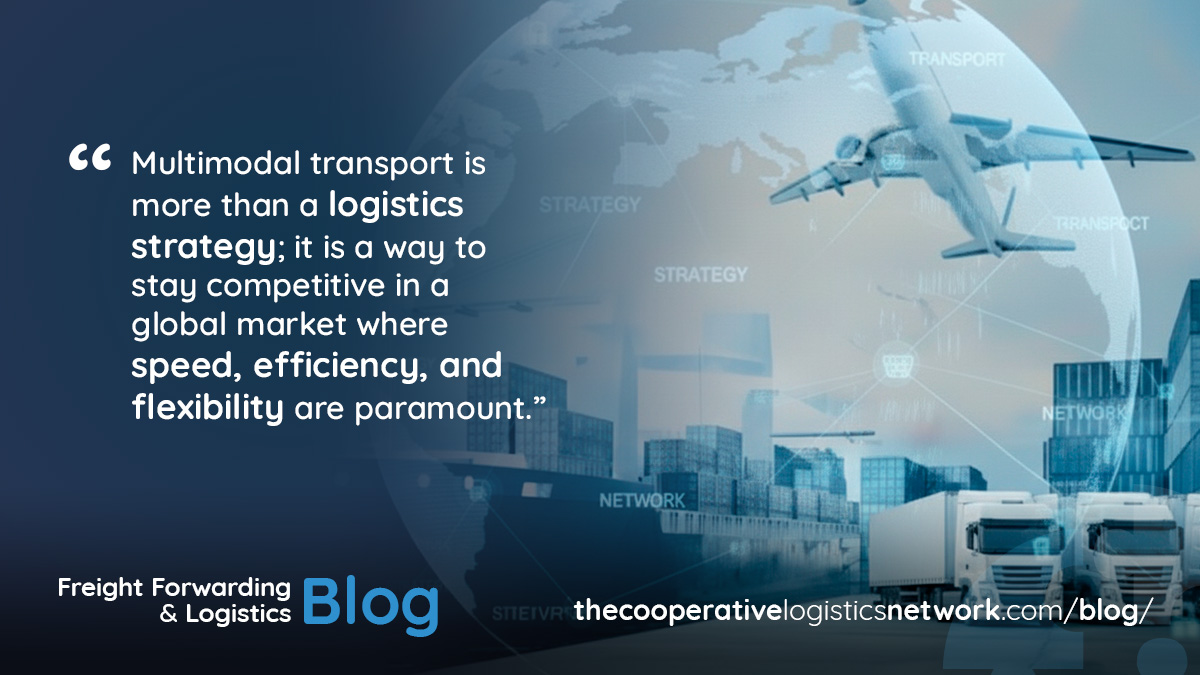The logistics landscape is evolving faster than ever. Businesses are no longer satisfied with moving goods from point A to point B, they want speed, efficiency, cost-effectiveness, and reliability. This is where multimodal transport comes in. By combining different modes of transport, including road, rail, sea, and air, forwarders can create seamless supply chains that respond to the demands of global trade. As 2026 approaches, certain multimodal routes are emerging as prime opportunities for freight forwarders looking to optimize operations and expand their international reach. Understanding these corridors and the trends shaping them is essential for forwarders who want to stay ahead of the curve.
Asia-Europe Corridors: The Backbone of Global Trade
One of the most significant opportunities in multimodal transport in 2026 lies in the Asia-Europe corridors. China continues to dominate manufacturing output, and ports such as Shanghai, Shenzhen, and Ningbo remain critical hubs for ocean freight. However, traditional shipping alone is no longer enough. Forwarders are increasingly combining rail and road transport with ocean shipping to reduce transit times and improve predictability.
The rise of the Belt and Road Initiative has expanded rail connectivity across Eurasia, enabling the transportation of goods from Chinese manufacturing centers to European markets in under two weeks. This is a substantial improvement over traditional ocean transit, which can take up to six weeks. For freight forwarders, this offers a chance to provide faster, more flexible services while maintaining cost efficiency. Multimodal transport solutions along these corridors also allow companies to manage inventory more effectively, reduce warehousing costs, and respond more quickly to market demand.
Air freight complements this network, especially for high-value or time-sensitive shipments. Cities like Frankfurt, Amsterdam, and Paris serve as key nodes where goods can transition from rail or sea to air transport, enabling rapid delivery across Europe. Forwarders who can integrate these modes seamlessly will find themselves in high demand among clients who value speed without compromising on reliability.

North America and Mexico: A Growing Multimodal Network
Across the Atlantic, North America and Mexico present another set of opportunities for multimodal transport. Ports in Los Angeles, Houston, and New York continue to handle enormous volumes of containerized cargo, but the integration of rail and trucking networks is opening new possibilities. The U.S.-Mexico trade relationship, driven by manufacturing and automotive supply chains, has created a surge in demand for multimodal logistics solutions.
Forwarders who can coordinate shipments across ocean, rail, and road networks are better equipped to manage congestion at major ports, reduce lead times, and improve overall supply chain efficiency. For example, containers arriving at the Port of Los Angeles can be transported by rail to Chicago or Dallas, and from there distributed by trucking to final destinations. This flexibility allows companies to respond to seasonal spikes, e-commerce growth, and shifting production patterns without over-relying on any single mode of transport.
Air freight also plays a key role in these corridors, particularly for high-priority shipments such as electronics, pharmaceuticals, and perishable goods. Integrating air with land and sea transport ensures that clients receive reliable service across all stages of the supply chain. In 2026, forwarders who can manage these complex multimodal networks efficiently will capture a growing share of the North American market.
Africa: Emerging Hubs and Cross-Border Opportunities
Africa is often overlooked in discussions of global logistics, but by 2026, it is expected to become a significant player in multimodal transport. Investment in port infrastructure, rail expansion, and cross-border highways is transforming the continent’s logistics landscape. Ports in Morocco, Nigeria, and Kenya are becoming regional gateways, while rail networks connect inland industrial and agricultural zones to these hubs.
Freight forwarders who understand the unique challenges of African logistics, such as customs procedures, regulatory variations, and road conditions, can gain a competitive advantage. Multimodal transport solutions are particularly valuable in Africa, where combining sea, rail, and road transport can reduce delays and costs. For example, shipping containers from Mombasa to inland hubs in Uganda or Ethiopia is more efficient when forwarders coordinate rail and trucking solutions alongside ocean freight.
Air freight also plays a role, particularly for high-value goods or urgent shipments. Integrating air with land and sea transport in Africa allows forwarders to offer faster delivery times while navigating complex infrastructure challenges. In 2026, companies that build expertise in these corridors and provide flexible multimodal services will be well-positioned to capitalize on the continent’s growth.
Latin America: Balancing Volume and Reach
Latin America represents another growing opportunity for multimodal transport in 2026. Ports in Brazil, Chile, and Mexico continue to handle large volumes of cargo, while rail and road networks are expanding to connect industrial and agricultural regions to these hubs. For freight forwarders, this region offers a chance to optimize supply chains by combining modes of transport strategically.
Project cargo, heavy machinery, and perishable goods are particularly suited to multimodal solutions in Latin America. Forwarders can move shipments efficiently from inland production centers to port hubs and onward to global markets. Air freight integration is also critical, particularly for time-sensitive exports such as seafood from Chile or high-tech products from Mexico. Forwarders who can offer seamless, multimodal solutions across these corridors will be able to compete effectively and attract high-value clients in 2026.
Technology and Visibility: Driving Multimodal Success
The growth of multimodal transport depends heavily on technology. Digital freight platforms, tracking systems, and predictive analytics are now essential for managing complex supply chains. Forwarders in 2026 will need to leverage these tools to optimize routes, anticipate disruptions, and provide clients with visibility across all modes of transport.
Technology also enables forwarders to streamline customs compliance, manage documentation efficiently, and reduce delays at ports and borders. By integrating data from ocean, rail, road, and air transport, forwarders can create end-to-end solutions that are faster, more reliable, and cost-effective. The forwarders who embrace digital transformation alongside multimodal transport strategies will be the ones to thrive in the increasingly competitive global logistics market.
Sustainability in Multimodal Transport
Sustainability is becoming a central concern for businesses and clients alike. Multimodal transport allows forwarders to design greener supply chains by optimizing routes, reducing fuel consumption, and selecting eco-friendly modes where possible. Combining rail with ocean transport, for example, can reduce carbon emissions significantly compared to long-haul trucking alone.
In 2026, forwarders who integrate sustainability into their multimodal strategies will attract clients who prioritize environmental responsibility. This not only strengthens brand reputation but also prepares companies for regulatory changes and market pressures related to carbon reduction. Sustainable multimodal transport is no longer just a trend—it is a necessity for forwarders seeking long-term growth.
Conclusion: Preparing for 2026
The year 2026 offers immense opportunities for forwarders who understand the power of multimodal transport. From Asia-Europe corridors to North America, Africa, and Latin America, the right combination of land, sea, and air transport can create more efficient, reliable, and flexible supply chains. Forwarders who leverage technology, anticipate market trends, and integrate sustainability into their operations will be well-positioned to capture these opportunities.
Multimodal transport is more than a logistics strategy; it is a way to stay competitive in a global market where speed, efficiency, and flexibility are paramount. Forwarders who invest in understanding emerging routes, optimizing operations, and providing end-to-end solutions will lead the industry in 2026 and beyond. The future belongs to those who can connect continents, industries, and markets seamlessly through innovative, multimodal logistics solutions.


